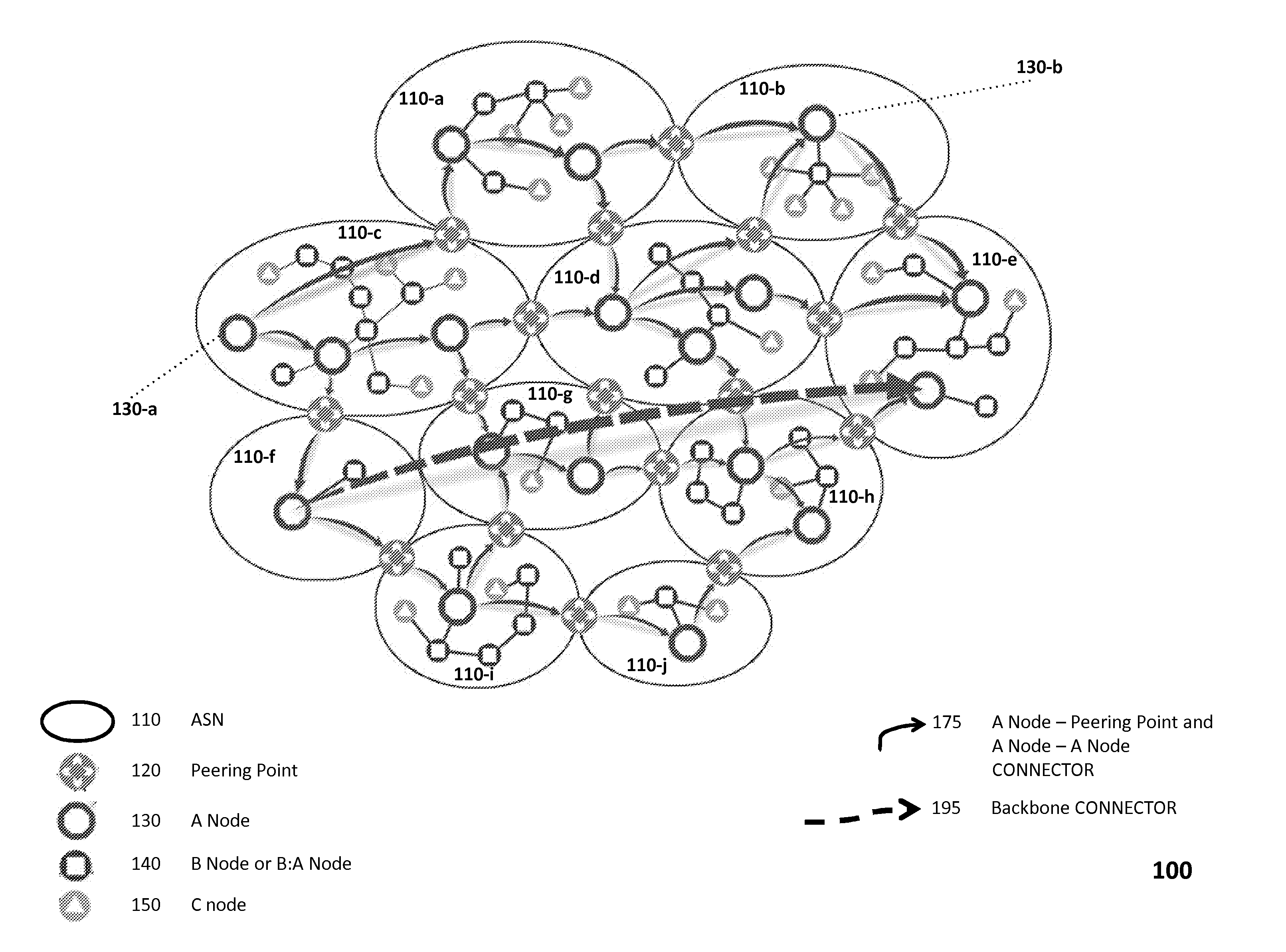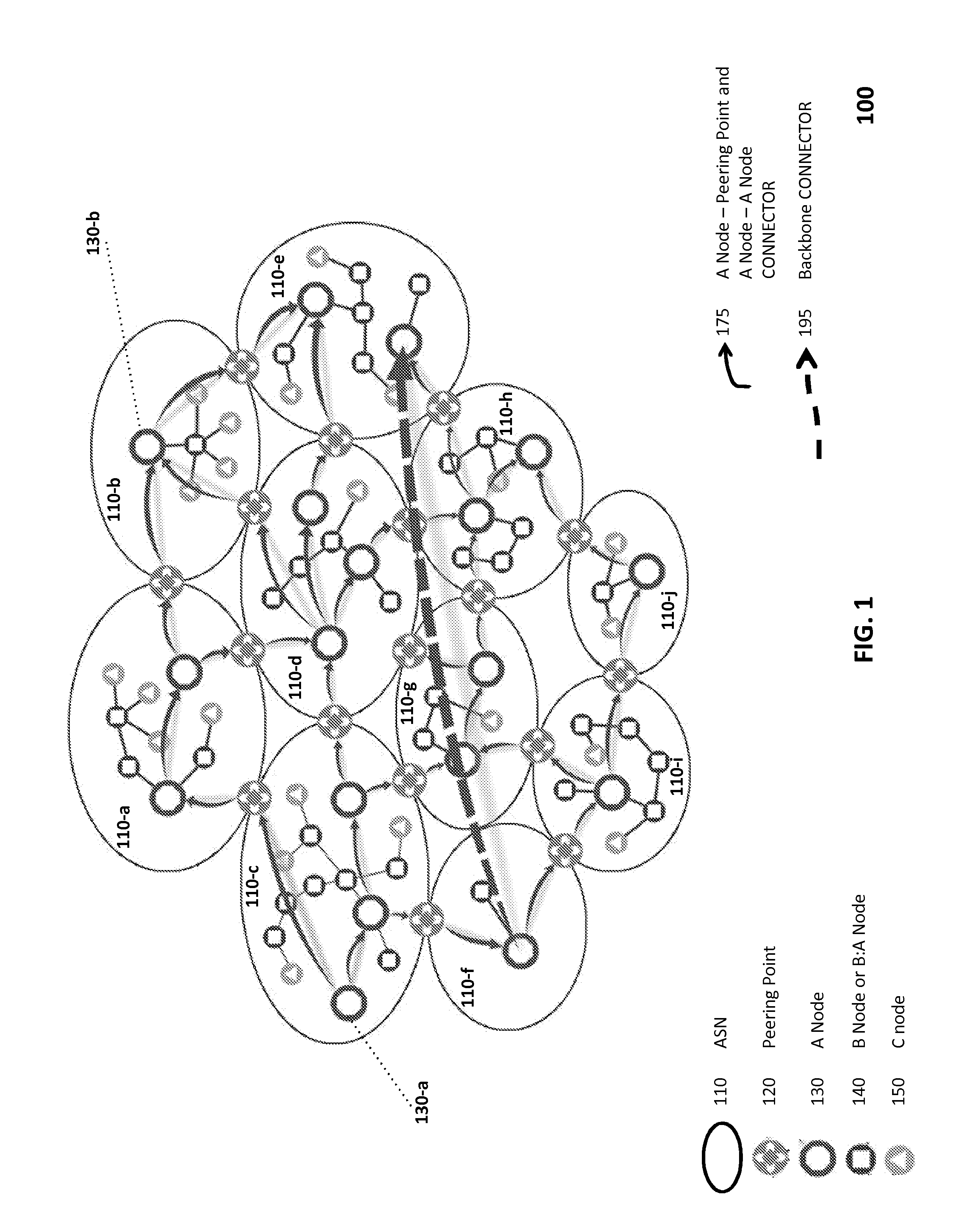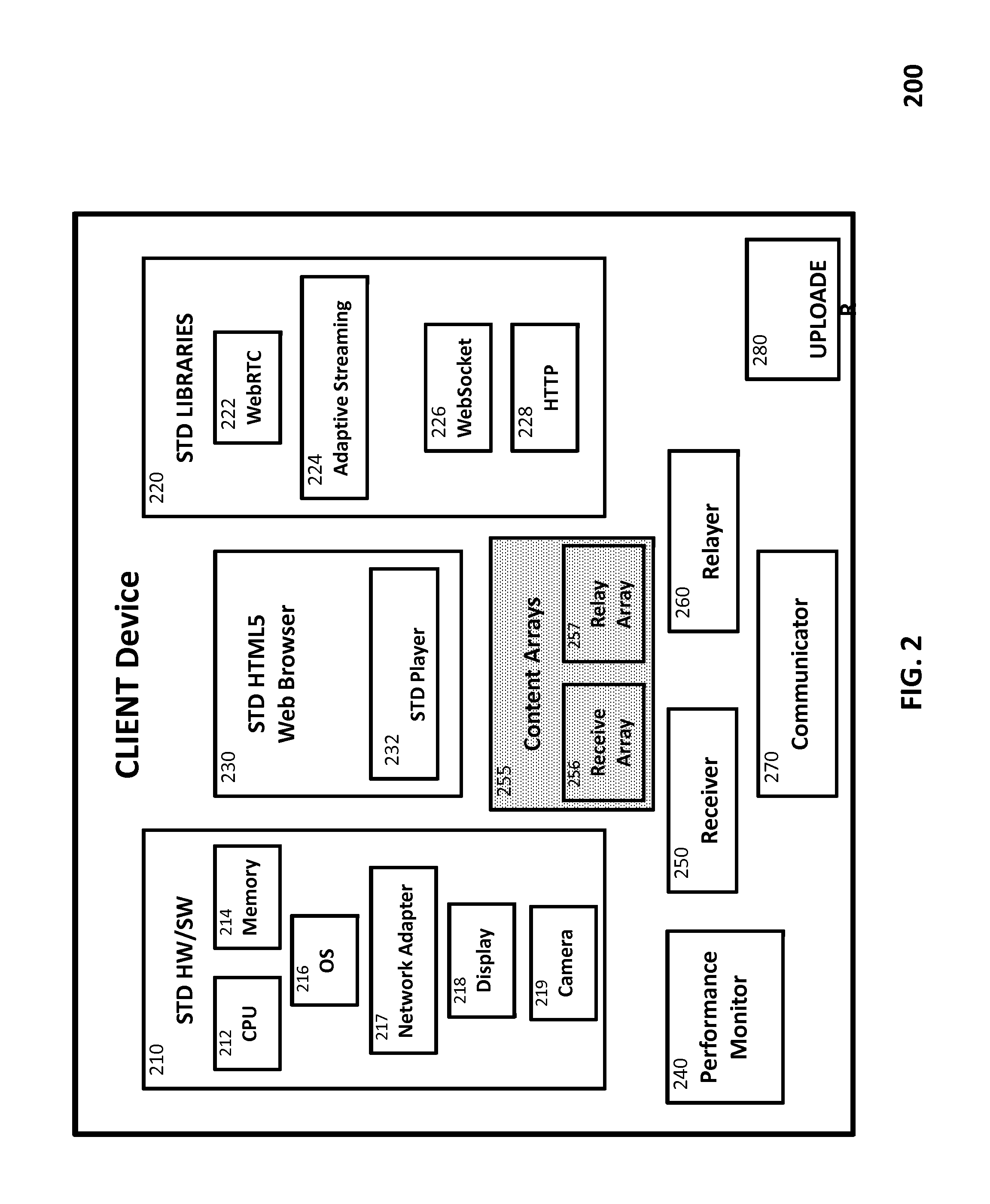As wired and
wireless network traffic continues to expand exponentially, finite capacity of the shared links or interconnections among components within a network is becoming an increasingly more relevant and troubling problem.
Moreover, because the level of congestion at these shared links is dynamic and subject to a great deal of volatility as network traffic ebbs and flows, such congestion is difficult to measure at any given time, and particularly difficult to predict even on a near-term basis.
This problem is somewhat analogous to that of
traffic congestion at the intersecting junctions of shared roads and freeways in increasingly populated areas.
While existing
GPS navigation and traffic control systems measure current congestion at these junctions, and calculate optimal paths to reroute individual drivers around such congestion, their ability to predict an
optimal route in advance for any particular driver is hampered by the volatile nature of
traffic congestion.
Similarly, as mobile voice and data usage soars, the limited availability of regulated RF spectrum is of particular concern to companies developing high-bandwidth mobile applications.
However, such a “
file transfer” approach imposes a
delay on the recipient's viewing (playing) of the video content—i.e., the recipient must wait until the entire file has been transferred before viewing the video content.
Given the relatively large file sizes of digitized video, this
delay can be significant.
For example, social interaction among viewers may be constrained (wholly apart from
jitter or other video artifacts) due to the fact that viewers experience the same event at different times. This is particularly problematic today when so many events (scheduled or unscheduled) are communicated in real time in so many different ways—from broadcast radio or television to
social media and other Internet services, accessible via mobile phones and desktop and
laptop computers, as well as via a constantly evolving domain of
consumer electronic devices.
Moreover, as the number of concurrent viewers of a streaming video event increases, maintaining a consistent QoE becomes a formidable problem.
Yet, with packets following different paths among routers and other shared network resources, maintaining a consistent QoS or QoE over the Internet remains an extremely difficult problem.
Monitoring QoS within and across ASNs is extremely difficult.
While the “Open
Message Format” (of the current BPG Version 4) provides for a “data dump” of certain information when a TCP / IP connection to a BGP
router is established, this mechanism is not terribly useful as a practical matter.
Many BGP routers do not support the Open
Message Format, while others simply turn it off.
Moreover, the information is typically 5 minutes out of date, which is a relatively long time given how frequently congestion levels change across the Internet.
Because such a large amount of
Internet traffic flows across the relatively high-bandwidth
peering points interconnecting ASNs, these peering points are often key “bottlenecks” or sources of much of the congestion across the Internet at any given time, apart from the “
last mile” problem within an ASN (i.e., congestion across the relatively lower-bandwidth wired and
wireless connections between end users and their “gateway” ISPs).
For example, as the
traffic load across an ASN peering point increases, the routers in the ASNs on each side of the peering point become congested.
In other words, these routers experience high utilization rates of RAM, CPU and other limited-capacity shared resources.
Increased demand on these resources reduces performance (e.g., bit rates) across these peering points, and eventually may lead to lost data packets.
Because network traffic across the Internet is not centrally controlled, it is difficult to predict the frequently changing levels of “peering point congestion” across the Internet at any given time.
If one cannot guarantee a consistent QoS within and across ASNs, it becomes very difficult to maintain a consistent QoE for viewers of streaming video events.
Any
system that streams video over the Internet is subject to unreliability and constantly changing levels of congestion of shared routers, particularly at ASN peering points through which so much
Internet traffic flows.
This problem is exacerbated when streaming video to large numbers of concurrent viewers across the Internet, and in particular across these ASN peering points.
Speed, however, is affected by the number of stops or roadblocks encountered along a
route, or in this context the number of “hops” encountered at intermediate routers between two nodes.
While network hubs can be employed in a LAN to broadcast information to all network nodes,
broadcasting packets of video segments across switches and routers over the Internet would be wildly impractical and inefficient.
Most network users would not be interested in viewing any given “channel” of video content, and significant congestion would occur near the point of origin as routers
broadcasting video segments to other routers would be quickly overwhelmed.
A broadcast solution is simply not feasible for delivering a channel of video content over the Internet from a
single point of origin to a large number of concurrent viewers who can join the channel at any time.
This approach is similarly impractical for large-scale video distribution across the Internet.
Moreover, specialized infrastructure is required, such as dedicated routers with multicasting functionality, which is also impractical and prohibitively expensive for large-scale commercial use.
But delivering a large number of
unicast packets simultaneously to each viewing node would also quickly overwhelm routers at or near the point of origin, and would fail to achieve a consistent QoS for many of the reasons noted above, not to mention the enormous cost of providing sufficient bandwidth to
handle such a large number of simultaneous transmissions.
While different users typically want to watch different video channels at any given time, VOD systems occasionally face “peak” demand periods during which a particular video event must be streamed to a large number of concurrent viewers (e.g., a final episode of a popular television series), which can overwhelm even the largest streaming video company's infrastructure—or at least result in an inefficient “worst-case” deployment of expensive infrastructure that is frequently underused (i.e., during more common periods of non-
peak demand).
With or without expensive edge-
server infrastructure, none of these VOD solutions addresses the QoS problem for unscheduled video events, as they all rely on “pre-seeding” edge servers or viewing nodes throughout the Internet with content known in advance—to ensure a nearby source of video content.
Streaming a live unscheduled event would require real-time concurrent delivery of video content to all of these edge servers or viewing nodes, a problem not addressed by any of these VOD systems.
These standards are designed, however, for point-to-point
video streaming, and do not address the “
video delivery” problem of streaming a video channel to large numbers of concurrent viewers across the Internet.
As a result, traffic among them may cross one or more potentially congested peering points.
One reason for this problem with existing P2P video streaming systems is that they are not constructed to be “compatible” with the underlying architecture of the Internet.
Any
overlay network topology built on top of the Internet is still subject to many points of disruption or failure (apart from new or disappearing nodes), such as the myriad of QoS problems noted above.
By not addressing the Internet's underlying QoS volatility, particularly at ASN peering points, such systems face significant obstacles in providing their users with a consistent QoE.
Moreover, real-time streaming of linear data to concurrent users imposes an additional constraint not found in
GPS navigation systems—the content must arrive “simultaneously” at each node.
Edge-
server and other
physical infrastructure approaches (akin to building freeways and off-ramps to provide higher-speed routes) are expensive and also fail to adequately address the problems of unscheduled events and high-concurrent usage of any particular event.
In another embodiment, if some or all of the routes along the overlay networks are capable of delivering video segments in time (even if such routes are non-optimal), then such routes are not reconfigured until a predefined congestion threshold is met, or another sufficiently significant problem is identified.
 Login to View More
Login to View More  Login to View More
Login to View More 


